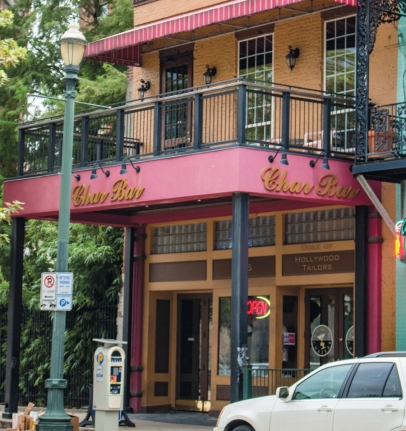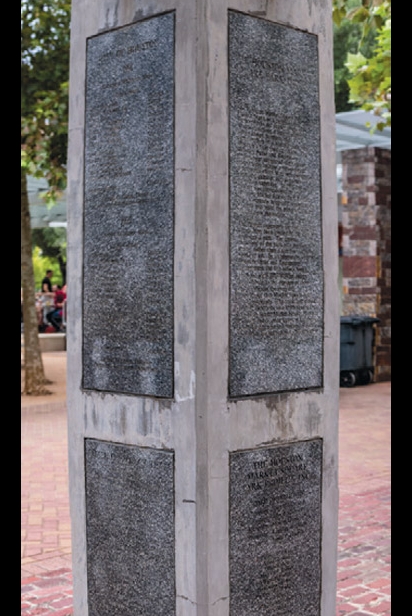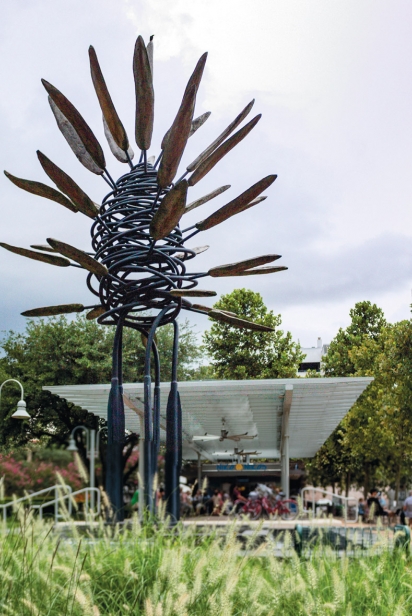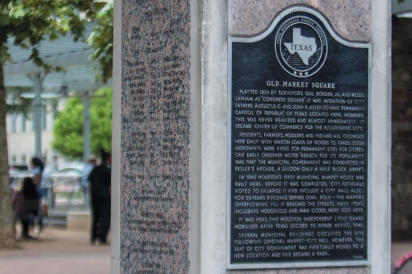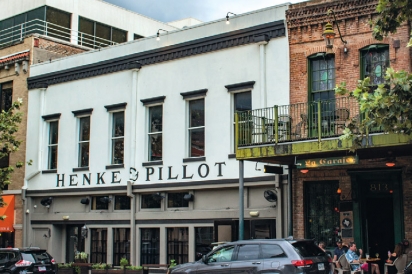Mister History on Market Square Houston
There aren’t many individuals who appreciate an aerial view quite as much as R.W. McKinney. A local historian, devout preservationist and avid teacher, he uses multi-story vantage points from buildings like Hotel Icon and The Houston Club to study the varied architecture, city layout and historic districts and sites of Houston’s past, present and future.
His unique devotion to telling the story of Houston began as a pastime in his middle school days when he would go to Downtown’s Julia Ideson Library to study antique maps, black-and-white photographs and newspaper clippings from decades past. “I remember being fascinated that you could access all that information right there in the library,” he says. “I especially loved the aerial maps and photographs.”Self taught through arduous independent study, McKinney has an unshakeable memory that he draws upon to rattle off facts, dates and renowned names like the Allen Brothers and Gail Borden Jr. faster than any pen can scribble. Indeed, McKinney holds a key to much of our city’s narrative, and with that knowledge, he has devoted much of his time to traveling to Houston and La Porte public schools to teach students Texas history with his series “Mister McKinney’s Historic Houston,” hosting a bi-weekly history segment on “Great Day Houston” and serving on the boards of organizations including the Bellaire Historical Society and Harris County Historical Society.
Asked about what part of local history fascinates him most, McKinney points to the city’s extreme growth and no-two-alike architecture, including his favorite: the Esperson Building. “From 1910 to 1920, the population grew 114%,” he says. “You can look at these aerial images over the years and see the growth happening right before your eyes.”
Amid all of his familiarity with this city, one area of Downtown in particular remains fascinating to McKinney: historic Market Square. Surrounded by sought-out destinations like La Carafe, Treebeards and The Honeymoon Bar & Café, these days this community-oriented block of town is host to family movie nights, Pilates meetups, blanket bingo and other social gatherings these days. But once, however, it was the location of the first City Hall and the earliest farmers markets.
Plotted out in 1836, this Downtown block featured an open-air pavilion where farmers, ranchers and fishermen from surrounding areas like the First Ward and the fertile bayou soil would travel in to sell produce and provisions like strawberries from Pasadena; pears and figs from Pearland; and dairy from Bellaire, as well as pecans, tomatoes, beef and fresh-caught fish, said McKinney.
The open-air first floor of the east-facing wooden structure housed a market , where individuals could shop and socialize from 5am to noon, Monday through Saturday. The second floor housed the first City Hall, beginning in 1841. Working at market was also something of endeavor for many residents, who would often arrive the night before and hitch up their horses before selling goods the following morning.
McKinney’s study of the area has also revealed some other surprising findings. For instance, Indian tribes such as the Bidai and Atakapa would travel to the market to trade hides and trinkets during the 1840s and a man named Thomas Beauchamp capitalized on selling fresh spring water at market long before the days of Ozarka bottled water. What’s more, many of the surrounding areas became known for their distinct cash crops, such as Pearland’s fruit harvest.
McKinney said that this historic district remained very much a food hub until a variety of factors—including transportation improvements, the oil boom, the appearance of grocery stores including Henke & Pillot and the development of convenience foods like TV dinners—moved the city away from agriculture and more towards commercial food. “Convenience took over and people started eating out more and often there was a second income in many homes because women were entering the workforce,” he says. “There really wasn’t the demand for it.”
As he stands in the middle of the sprawling historical block, McKinney remarks on how much it all has changed since its founding and yet how he hopes its history remains relevant and remembered in the coming years.
“I feel like the appreciation is in place to keep these places around,” he says. “Houston had a lot of people working hard to keep these historic places protected.”
Mr. McKinney’s Historic Bus (houstonhistoricbus.org) is a project set to inspire Houstonians (and in particular youth) about the history of Houston.


